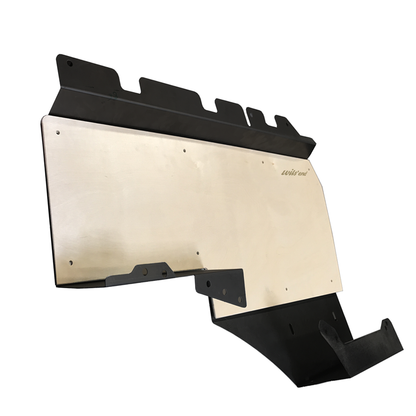It has been a while, finally close to finishing my rear quarter panel and solar project so I figure I’ll Start a thread in case my research could be helpful for others.
The goal is to have second/auxiliary battery and my fridge run 100% on battery and solar in the summer. This all started long ago pondering about second battery for the fridge because I was using primary and it didn’t last very long plus the worry of not able to start the car. When @NLXTACY started making the rear quarter panel I promptly bought one of the first batch and as many of you know that’s well over 2 years ago.
Here is my final parts list:
4x4 lab cargo basket
Duracell 80 AH AGM deep cycle battery mounted in the cargo basket
Wits end rear quarter panel
Mounted on the RQP
CTEK DC to DC plus solar smart charger
Arb twin compressor
Pure sine 1000 w inverter
Bluesea accessory distribution fuse block(30 amp max)
Amazon Mini ANL distribution fuse block for the compressor and inverter
Amazon Ammeter with shunt
2x Solar is renogy 100W flexible solar panel
Edit:
The revised/observed calculation for power:
ARB 60L element fridge needs 5 Amp to run. 2x 100W solar panel in the summer should be able to provide ~100w on average for about 10+ hours. Even in direct sunlight, the panels need constant attention to get 140W or 10amp of charge power.
Fridge:
5 amp x 6 hours(1/4 run time) = 30 AH
Solar:
100W(average) = 7Amp x 10 hours = 70 AH
With some work(repositioning the panels in direct sunlight) and 2x 100W panels I should have a surplus of electricity and battery will be kept full during the day by a big margin.
HOWEVER, temperature does have quite a bit to do with power production: Ctek will shutoff at 122F(although can be fooled by putting the sensor into the fridge) and panels themselves will only get about 70% power in hot weather. I like to test the panel efficiency in cooler weather.
How to get the most power out of the solar panels:
Direct sunlight with panel(s) as close to 90 degrees as possible
Avoid ANY shade!!!! Ever a small portion of the panel has shade the power drops to nothing since all the cells are connected in serial
When connecting multiple panels:
Parallel connections:
higher more stable current/amperage
with higher amperage, the cables must be adequate or big enough to avoid voltage drop/power lost
when one of the panels has shade it doesn't affect the panel in direct sunlight
Serial:
Higher voltage and lower amperage will be more efficient/less power lost over longer distance or smaller cables
BUT if one of them has shade then the entire array power will drop to nothing
Here are some obligatory pictures.



I’ll post some links where I found useful info later. Once I get everything sorted out I’ll post links for the products I used in case someone else wants to build something similar.
The goal is to have second/auxiliary battery and my fridge run 100% on battery and solar in the summer. This all started long ago pondering about second battery for the fridge because I was using primary and it didn’t last very long plus the worry of not able to start the car. When @NLXTACY started making the rear quarter panel I promptly bought one of the first batch and as many of you know that’s well over 2 years ago.
Here is my final parts list:
4x4 lab cargo basket
Duracell 80 AH AGM deep cycle battery mounted in the cargo basket
Wits end rear quarter panel
Mounted on the RQP
CTEK DC to DC plus solar smart charger
Arb twin compressor
Pure sine 1000 w inverter
Bluesea accessory distribution fuse block(30 amp max)
Amazon Mini ANL distribution fuse block for the compressor and inverter
Amazon Ammeter with shunt
2x Solar is renogy 100W flexible solar panel
Edit:
The revised/observed calculation for power:
ARB 60L element fridge needs 5 Amp to run. 2x 100W solar panel in the summer should be able to provide ~100w on average for about 10+ hours. Even in direct sunlight, the panels need constant attention to get 140W or 10amp of charge power.
Fridge:
5 amp x 6 hours(1/4 run time) = 30 AH
Solar:
100W(average) = 7Amp x 10 hours = 70 AH
With some work(repositioning the panels in direct sunlight) and 2x 100W panels I should have a surplus of electricity and battery will be kept full during the day by a big margin.
HOWEVER, temperature does have quite a bit to do with power production: Ctek will shutoff at 122F(although can be fooled by putting the sensor into the fridge) and panels themselves will only get about 70% power in hot weather. I like to test the panel efficiency in cooler weather.
How to get the most power out of the solar panels:
Direct sunlight with panel(s) as close to 90 degrees as possible
Avoid ANY shade!!!! Ever a small portion of the panel has shade the power drops to nothing since all the cells are connected in serial
When connecting multiple panels:
Parallel connections:
higher more stable current/amperage
with higher amperage, the cables must be adequate or big enough to avoid voltage drop/power lost
when one of the panels has shade it doesn't affect the panel in direct sunlight
Serial:
Higher voltage and lower amperage will be more efficient/less power lost over longer distance or smaller cables
BUT if one of them has shade then the entire array power will drop to nothing
Here are some obligatory pictures.
I’ll post some links where I found useful info later. Once I get everything sorted out I’ll post links for the products I used in case someone else wants to build something similar.
Last edited:






